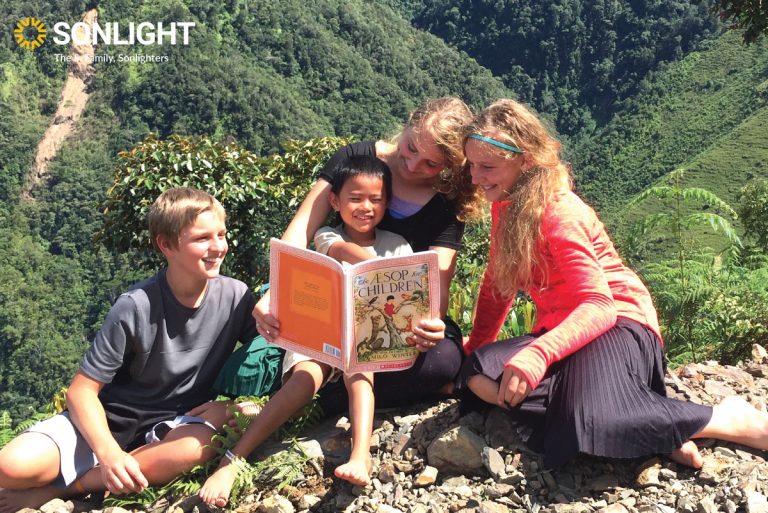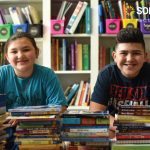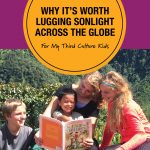When this family started homeschooling overseas, they never imagined how switching to a literature-based curriculum would not only solve their worksheet burnout but also build a portable library, strengthen family bonds, and help their Third Culture Kids develop a biblical worldview and heart for the world.
My family started our homeschooling journey 11 years ago with a traditional Christian curriculum. Although I am a second-generation homeschooler, I am a traditionalist by nature. I also earned my bachelor's degree in education, so I was trained to follow traditional teaching methods.
I always knew I wanted to homeschool my children, and when the time came to begin teaching my oldest, I gravitated to the traditional. Because we live overseas, we purchased several years of curriculum at once, took it halfway around the world in our luggage, and prayed we wouldn’t regret it.
My oldest daughter was a worksheet kid, so she did great with the traditional curriculum at first. Two years later, however, she was already getting burned out with the worksheet approach. Little brother had started school by then as well, and he hated worksheets from the start. Additionally, though my daughter loved to read, she wasn’t enjoying the readers that came with her curriculum.
I was beginning to wonder if there was a better option.
The Sonlight Revelation
ArAround this time, I read a post on a homeschool blog that mentioned literature-based homeschooling with Sonlight. I had never heard of that approach, but I was greatly intrigued. Our family already loved books and already spent a good deal of time reading together, so Sonlight, with its emphasis on great literature, looked like an obvious choice. I told my husband, “We already read all the time, so it would be great if that could be a big part of school!” That was the beginning of my love affair with Sonlight.
We soon switched to Sonlight from the traditional curriculum, and eight years later my only regret is that I didn’t know about Sonlight sooner. Why is Sonlight curriculum such a great thing for Third Culture Kids (TCKs) specifically? There are four primary reasons for my family:
1. Building a Great Library of English Books
When I discovered Sonlight, my oldest was in 2nd grade and had grown in her reading ability to the point where she was blazing through easy chapter books faster than I could provide them. She found her traditional curriculum readers boring, and living in Asia meant that we did not have access to libraries or to many books in English, especially quality literature. I excitedly realized that using a literature-based curriculum like Sonlight would allow us to build our own library of great books that our children could return to again and again.
Not only has it provided hundreds (probably thousands) of hours of enjoyment, our Sonlight library has provided my children with an excellent education that is light on worksheets and textbooks and heavy on delightful, meaningful books.
2. Growing Together as a Family
It is important for any family to be close-knit, but it is especially important for Third Culture Kids and those homeschooling overseas because of their unique perspective of home and self-identity. For my family, books have made a great contribution to family togetherness.
Many of the books in our Sonlight library have become family favorites. We always have two HBLs going at a time, and read-alouds are a family affair. If you visited our home, you would often hear someone quoting from a favorite Sonlight book or referencing a book character in one way or another. My children even named two pets after animals in I Rode a Horse of Milk White Jade from HBL F—Bayan and Bator.
3. Teaching a Biblical Worldview
Whether we are intentionally teaching our children a worldview or not, our children are learning a worldview from birth.
My family lives in a Buddhist country, so as a Bible believing family, it is crucial that my husband and I teach our children to see the world through the lens of God’s Word. They need to be able to look at the culture around them, whether the Buddhist culture of South East Asia or the Post-Christian culture of the United States, and critically (but lovingly) understand and evaluate that culture in light of God’s Word (1 John 4:1).
Sonlight does not water down the hard facts of life in this world but introduces difficult topics to our children so they can learn to respond to them from a Biblical perspective.Whether our children are sharing the joys and sorrows of a homeless family in The Family Under the Bridge, rejoicing with George Muller over answered prayer, struggling with a group of French children as they hide from the Nazis in Twenty and Ten, or weeping with Adoniram Judson in the loss of his wife and daughter, they are beginning to learn about the realities of life. The Sonlight Instructor’s Guide steers us as teachers and parents to help our children work through these issues and see that God is working in and through all of those things. No matter the situation, He is sovereign, and He is good (Colossians 1:16-17, Matthew 10:29-31). As we guide them in thinking through these sorts of things, they are absorbing our Biblical worldview.
4. Growing a Heart for the World
One of the aspects of a Biblical worldview that we want to instill in our children is a heart for the world. The fact that my children are TCKs and have spent most of their lives outside of the United States does not automatically mean that they will be burdened for people around the world. They are still prone to being self-centered just like any child. A heart for the world must be modeled and taught.
Sonlight provides us with specific books that allow us to learn about and pray for specific people groups as a family while homeschooling overseas, like:
- Around the World with Kate and Mack
- Window on the World
- American Indian Prayer Guide
- 100 Gateway Cities
My kids know a lot about the three countries and cultures they have lived in, but it has been so good for them to learn about the specific prayer needs of people in other cultures. Sometimes, like in The Perilous Road, characters we come to love are on the opposite side of where we would typically find ourselves. This has sparked countless conversations in my family, and through it my children have learned that they don’t have to agree with people in order to love them. Discussions around Sonlight books have helped my children have a heart for the world.
Homeschooling Overseas: Is It Right for You?
Are you an overseas missionary? Live on a foreign military base? Maybe you’re not wondering whether Sonlight is worth it, but if homeschooling overseas is even worth it. As Sarita Holzmann says, “You know your situation best. You know your children best. As you seek the Lord's guidance, you and your spouse can make the best decision for your unique family and children. Whether that means public school, private school, boarding school or home school.”
You know best. As you consider homeschooling overseas, consider the following benefits of homeschooling while overseas, according to other moms who do it:
- Better adjustment time: You can ease your children's transitions into foreign countries and home assignments. They don't have to adjust to a new land, new language, new culture, and new school all at once.
- Financial freedom: As one mom said, "The public schools here are not safe and the private school is too expensive."
- Flexibility: You can completely adjust your schedule as needed. Home assignments, travel, and holidays can all become integrated parts of school instead of disruptions to your children's education
- Time: You can give your kids a fantastic education in far less time than a classroom school requires.
- More family time: Because you're so involved with your children's education, homeschooling can open up extra lines of dialogue with your children. This can be a huge blessing when they have so much to process all the time.
- Obedience to your calling: You can live wherever the Lord sends you, even if there aren't schools nearby.
But I don't want to sugarcoat anything. Homeschooling can be difficult. As one homeschooling mom in the Middle East said, "Homeschooling overseas is scary. It's perfectly normal to feel that."
Potential obstacles to homeschooling overseas (according to moms who do it):
- Perception: Homeschooling may be very unusual where you live. Your neighbors (and possibly the government) might think you're a bit odd, and your neighbors may wonder if their local schools simply aren't "good enough" for you.
- Home as your mission field: You may face pressure that you aren't doing "real work" if you're at home homeschooling the kids.
- Qualification: You may feel inadequate to do the job. You're not a certified teacher; how can you know your children will learn? (Spoiler alert: You've taught your children so many skills and installed so much knowledge in them already; you can definitely continue teaching them "school" subjects.)
- Boundaries: It may be hard to draw good boundaries between homeschooling and your work. Your local neighbors (and supporters) may not understand that you really do have a full-time job as your children's teacher.
- Isolation: Sometimes, having your children in school helps you connect with other families, while homeschooling overseas can sometimes impact whether you connect with others. You may have to be more intentional about helping your children develop local friends. (Although some say homeschooling actually gives their children more time to play with other kids.)
Parents are called to walk with God as we raise, educate, and disciple our children to walk with God, too! Whether you decide to homeschool overseas, with or without Sonlight, I hope you are encouraged to take the next step. Maybe like me you’ll also fall in love with homeschooling overseas and with Sonlgiht.









